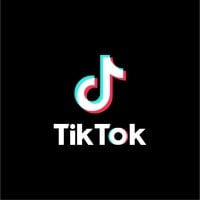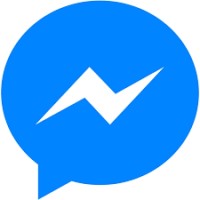Top 10 Most Downloaded Apps Worldwide in 2020
 TikTok, known in China as Douyin, is a short-form video hosting service owned by Chinese company ByteDance.
It hosts a variety of short-form user videos, from genres like pranks, stunts, tricks, jokes, dance, and entertainment with durations from 15 seconds to ten minutes.
TikTok, known in China as Douyin, is a short-form video hosting service owned by Chinese company ByteDance.
It hosts a variety of short-form user videos, from genres like pranks, stunts, tricks, jokes, dance, and entertainment with durations from 15 seconds to ten minutes. Most of the new TikTok memes and trends are simply dumb. (I do like the Ohio meme, though.) And don't get me started on the dangerous challenges. (Yes, there are harmless and fun challenges like the Ice Bucket Challenge.)
I really feel bad for this app. It was initially just about doing dances, having fun, or lip-syncing. Now, people are just doing dangerous challenges for a few follows and some attention. I still have faith that this app can get better.
Now that's just sad. What's even sadder is that this app had potential, but the user base...

At #2, WhatsApp had 600 million downloads worldwide but only 44.8 million in the US. It is the most downloaded app owned by Facebook in 2020 and, surprisingly, has a strong international appeal. WhatsApp is a free-to-download messenger app for smartphones. It uses the internet to send messages, images, audio, or video. The service is very similar to text messaging services. However, because WhatsApp uses the internet to send messages, the cost of using WhatsApp is significantly less than texting.
You can also use WhatsApp on your desktop. Simply go to the WhatsApp website and download it to Mac or Windows. It's popular with teenagers because of features like group chatting, voice messages, and location sharing. Not only is WhatsApp simple to use, but it also offers far more features and customizations than traditional SMS messaging, all for free. Additionally, there is a business version called WhatsApp Business, built specifically so entrepreneurs can connect with customers.
One reason it's not as popular in the US, as opposed to, say, Latin America where it's extremely popular, is that we have flat-rate SMS texting that comes standard on nearly all phone carriers. In other countries, it can cost on average $0.11 per text. This isn't the whole story, though. The US caters solely to the domestic market. The rest of the world is on the globalization train, with friends and business taking place in neighboring countries and across the globe. The app is necessary to chat with friends abroad.
International text messaging in the US is expensive, regardless of the carrier, but in general, we have less focus on making and maintaining these friendships. One-third of US app users are primarily travelers or people who have been abroad. Students going abroad for an internship will often download the app before leaving, and even if they don't get a local phone number once they arrive, they can give out their US number.
 Facebook is a corporation and an online social networking service headquartered in Menlo Park, California, in the United States.
Facebook is a corporation and an online social networking service headquartered in Menlo Park, California, in the United States. Facebook continues to do impressively well, with 540 million downloads. It had 53 million downloads from the US. Facebook itself has become quite the influence, not just as a social media platform but also because it owns three other apps besides the original Facebook app, making four in the top six.
Facebook is a social networking website where users can post comments, share photographs, and post links to news or other interesting content on the web, chat live, and watch short-form video. Facebook began in February 2004 as a school-based social network at Harvard University. It was created by Mark Zuckerberg along with Eduardo Saverin, both students at the college.
However, it wasn't until 2006 that Facebook opened to anyone 13 years or older, and it took off, rapidly replacing MySpace as the most popular social network in the world. Facebook's success can be attributed to its ability to appeal to both people and businesses, and its ability to interact with sites around the web by providing a single login that works across multiple sites. Facebook is user-friendly and open to everyone. Even the least technically-minded people can sign up and begin posting on Facebook, which is why your parents and grandparents probably still use it.

Instagram is a social media platform where you can share images and videos. The app is owned by Facebook and garnered 503 million downloads worldwide, with 62 million of those coming from the U.S. It is the fourth most downloaded mobile app of the 2010s.
It seems like everyone is on Instagram nowadays, from small businesses to large ones, news organizations to cultural institutions, celebrities, photographers, and musicians. Not to mention the cottage industry of influencers that has arisen in its wake. Instagram is like a simplified version of Facebook, with an emphasis on mobile use and visual sharing. Like other social networks, you interact with other users on Instagram by following them, being followed by them, commenting, liking, tagging, and private messaging. You can also save photos you see on Instagram. It's not hard to see how this became a popular app in our society.

From March 2020 to February 2021, my public school held online classes, so I basically had online school for a year. It destroyed my learning.
At #5, we have the app everyone is familiar with: Zoom. Everyone has been on a Zoom call at least once in the last year. If you haven't, did you even live in 2020? The app received 477 million downloads worldwide, almost half a billion, with 81 million of those being in the U.S., putting it in second place for most downloads in the U.S. behind TikTok.
There's no question that Zoom has played a big role in both our professional and private lives during the coronavirus pandemic. Zoom is an enterprise-grade, large-scale video-calling service with tons of features, and it has a free plan. The free plan allows you to call up to 100 participants and use many of the features, but the meeting time is limited to 40 minutes. Even with the free plan, you can record a call, mute participants, chat, share documents or your screen, make HD video calls, use a whiteboard or virtual backgrounds, send emojis, and offer a lot more that Google Meet lacks. This makes it easier for business leaders or teachers to use Zoom to teach or explain something.

Messenger is pretty straightforward. I believe the name speaks for itself. It had 404 million downloads, with 61 million in the US. It's actually owned by Facebook itself. The app can be used for instant messaging, sharing photos, videos, audio recordings, and for group chats.
The app, which is free to download, can be used to communicate with your friends on Facebook and with your phone contacts. It's the replacement for Facebook Chat. You can connect your Facebook account to the app, but you are not required to use it. You can use your phone number as well. Some useful features included in Messenger are the typing indicator to see when a person is typing, delivered receipts, read receipts, and timestamps for when the message was sent and when the recipient read the most recent one. You can make payments, send locations, play games, and set reminders, all within the app, which really sets it apart from some of the other apps on this list.
Snapchat got 281 million downloads in 2020, with 51 million being in the US. Snapchat is a popular social media platform that allows users to send messages to each other and send pictures or snaps. You can also have larger group chats. Snapchat also allows you to post stories, which is basically a snap that everyone who has you added can see. Based on personal experience, I like it. In fact, I would almost go as far as to say that it's become my favorite way of communicating with other people.
Probably the most impractical social media that somehow got popular.

Telegram had 256 million downloads, and I have surprisingly never heard of it. Basically, it's a messaging app that is pretty straightforward. It's a fast and secure messaging platform with over 500 million active users.
With Telegram, you can send messages, photos, videos, and files of any type, as well as create groups for up to 200,000 people or channels for broadcasting to unlimited audiences. You can write to your phone contacts and find people by their usernames. You can also sync up between your devices, which can be nice. It's not necessarily a social media platform, at least not in my book, but it seems to be a place where you can have large message groups, kind of like Discord in a way.
Why use this when you can use Zoom, Webex, or any number of other apps?
At number nine, Google Meet comes in with 254 million downloads. It is essentially an alternative to Zoom, which is seemingly the more popular option. Both are fundamentally the same thing, with the primary objective being video conferencing.
However, there are some notable differences between the two. Anyone with a Google account can create or join a Google Meet call. Up to 100 participants can join a call, and the free plan allows for 1-hour meetings. Google Meet is ideal for quick meetings and is easily accessible. You can simply go to the Google Meet website and sign in with your Google account. With one click, you can start a video call or schedule one with Google Calendar. Share the URL with your participants, and they can join the call after logging in to their Google account. Technically, you don't even need the app. Based on personal experience, I'd say Google Meet is like Zoom, but it's better for a smaller group of people.

Who doesn't like watching Netflix? It's an app that allows you to watch shows and movies. It was downloaded 223 million times, with 44.7 million downloads coming from the US alone. Netflix was also one of the highest-grossing apps in 2020, making a surprising $209 billion.
Considering that last year everyone was in quarantine for a significant amount of time, it makes sense that Netflix was a go-to entertainment option. It may very well be the future of movies. I hate to say it, but movie theaters struggled in 2020. Now, with Netflix, we can easily pause movies whenever we want to take a snack break or whatever. I've already made a list discussing why theaters may be a thing of the past. Feel free to check it out if you haven't already.